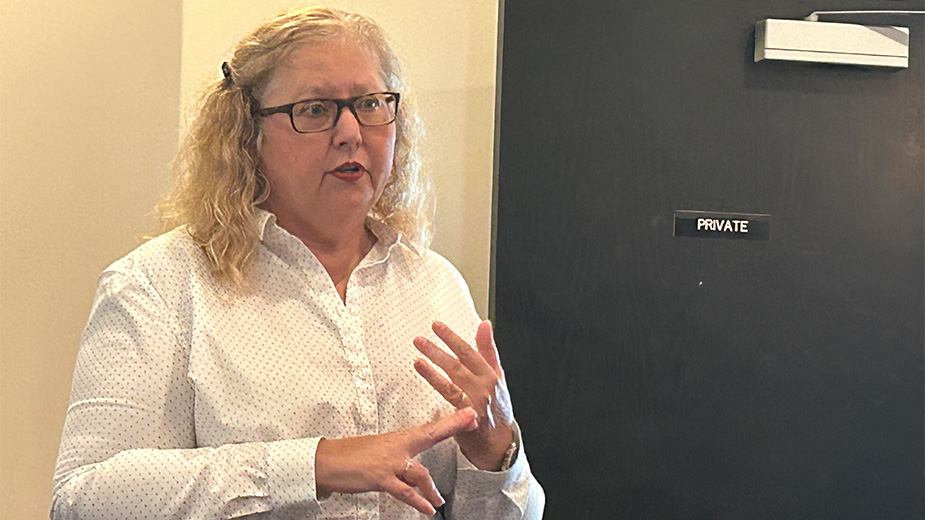Small: UCFC-First Defiance Merger a ‘Clean Slate’ for Growth
YOUNGSTOWN, Ohio – Once its merger with First Defiance Financial Corp. is complete, decision-making will remain local at Home Savings Bank, Gary M. Small assured Monday afternoon.
Local customers will still take deals “to someone who’s of the community and knows the community,” said Small, president and CEO of United Community Financial Corp., the holding company for Home Savings.
“We run credit out of this market. Frank Hierro is our local market president. The routine would be the same,” he added.
United Community and First Defiance announced Monday morning that the bank holding companies had agreed to merge, a $473 million stock transaction expected to be final in early 2020. The merger will create what the companies describe as a “premier Midwest franchise.” A new name for the bank will be chosen jointly by the two entities.
Under the terms of the agreement, shareholders of United Community will receive 0.3715 shares of First Defiance common stock for each share of United Community common stock. Upon closing, First Defiance shareholders will own 52.5% of the combined company and United Community shareholders 47.5%.
At the close of trading Monday, UCFC shares rose to $10.10, up 5.1% from opening at $9.60. Shares of First Defiance opened Monday at $26 and rose to $27.23, up 3.46%.
Small said he and Donald P. Hileman, president and CEO of First Defiance, began discussions about 30 months ago. They set those discussions aside for a time to see if they still felt the same way later, then earlier this year resumed talks.
“In the banking industry right now, it’s a good time relative to performance for all banks,” Small said. “But strategically, we as an executive team and the board have always been looking at what’s the next best strategic move that we can make on behalf of our clients and our shareholders to better serve the community and make sure that we’ve got a more resilient and durable organization going forward.”
The two companies are “very similarly situated” in terms of the types of business they operate, “just at opposite sides of the state,” Small said. First Defiance has branches in northwestern Ohio, northeastern Indiana and southwestern Michigan.
UCFC also explored potential partnerships with other institutions – both larger and smaller – over the past few years, although he declined to say how many potential partners were considered. “We were a very informed participant in this process,” he said.
And he said the merger wasn’t driven by need.
“Neither bank needed to do anything. This isn’t about us seeing trouble over the horizon or trouble in our existing businesses,” he said. “This was really about how could we position our businesses to be so much more than they are today by getting together and be in a better position to grow and add value down the road.”
Splitting the headquarters – the holding company will be based in Defiance while the bank is based here – was deliberately done, with the benefits of the deal equally shared in the “merger of equals,” as Small described it.
“A third of the organization sizewise, from a deposit standpoint, is right here in the Valley, and that is by far the largest market in all of the markets served by the two individual companies today,” Small said.
“We’ll be a top quartile performer for an organization of our size. The currency vis a vis the stock will be very strong,” he continued. “We’ll be in a great position for additional growth as opportunities become available and be unique across northern Ohio, relative to still delivering a community bank model … but having the backbone of a larger organization.”
The two institutions went through a “very robust” due diligence process, focusing on credit and loan portfolios, Hileman said.
“We reviewed individually 76% of all commercial balances and 100% of commercial relationships greater than $2 million [in] UCFC’s portfolio,” he said. “Conversely, they reviewed approximately 61% of First Defiance’s commercial balances.”
The merged financial institution, which will operate 77 branches in non-overlapping markets, will have combined assets of $6.1 billion, with gross loans of $5 billion and deposits of $4.9 billion, the executives said.
“We’re both pretty strong on the commercial front. We’re very good on real estate and we’ll continue to be very good on real estate,” Small said.
Consumer real estate, or home mortgages, are “a particular strength” for Home Savings, he continued. Residential mortgages represent about 42% of Home Saving’s loan business, compared to 18% for First Defiance.
“First Defiance has a nice franchise but it’s not nearly the size and they don’t have the product breadth that we have. So they’ll benefit in that market from us being able to bring some of those tools over” Small said.
Meanwhile, First Defiance has “some fee business around insurance agency activity and investments where they’re a little stronger than we are, so we’ll benefit from that know-how coming in as well,” he continued.
Pretax merger-related costs are estimated at $30 million, Paul Nungester, chief financial officer for First Defiance, said during a conference call Monday with reporters and analysts.
The companies anticipate operational savings of about 25% following the merger of the two approximately equal-sized organizations, according to Small. Since their geographic footprints don’t overlap, those savings will come from eliminating redundant backroom systems.
“There will be overlap on some leadership and executive positions, which is typical, and we’ll have some support and administrative functions in both sites where we’ll have some adjustments to make as well, but not nearly to the extent of what you think of in normal [mergers and acquisitions] as far as numbers,” he said.
In all, just 6% of the companies’ combined 1,150 jobs “would probably be the endgame,” but that doesn’t take into account expansions in business groups such as residential mortgage that could take place, Nungester said.
Once the deal is completed, Small will become president of the holding company and the bank, and Hileman will become CEO of the bank and holding company.
Hileman’s continued role on the board and Small’s leadership as CEO will provide “consistency in strategy and core values from the top of the housethat we will continue to drive through the rest of the organization,” Hileman said. As the leadership team is built, it will have a “strong balance” between members from both financial institutions, he added.
“We’ll operate like that for about a year as we jointly work with our teams to get through the integration and bring our customers along,” Small said.
At the beginning of 2021, Hileman will become executive chairman of the organization and Small will move into the president/CEO role for both the bank and the parent company.
With the merger likely will come the retirement of the Home Savings name. That name, atop the local bank’s building, is one of the most familiar elements of the downtown Youngstown skyline.
The institutions purposely didn’t rush to get a name, Small said. First Defiance marks 100 years this year and Home Savings 130, with both names having served their markets well.
“Every 130 years you kind of have to dust off the brand and think about, as we grow and grow beyond the Valley, is there a name or positioning that might resonate for the next 100 years,” he said.
“I won’t exclude that it may have some relevance to the name we have today. It’s not as if we’re divorcing ourselves of that possibility but we’re going to start with a clean slate.”
MORE:
UCFC Merger Seen as Good and Bad News for Valley
Merger Unites Best of UCFC and First Definace, CEOs Say
Copyright 2024 The Business Journal, Youngstown, Ohio.



